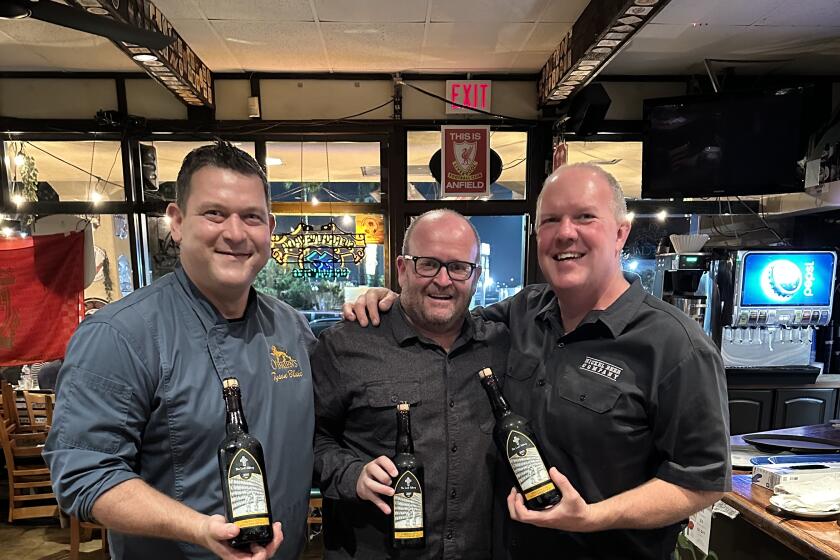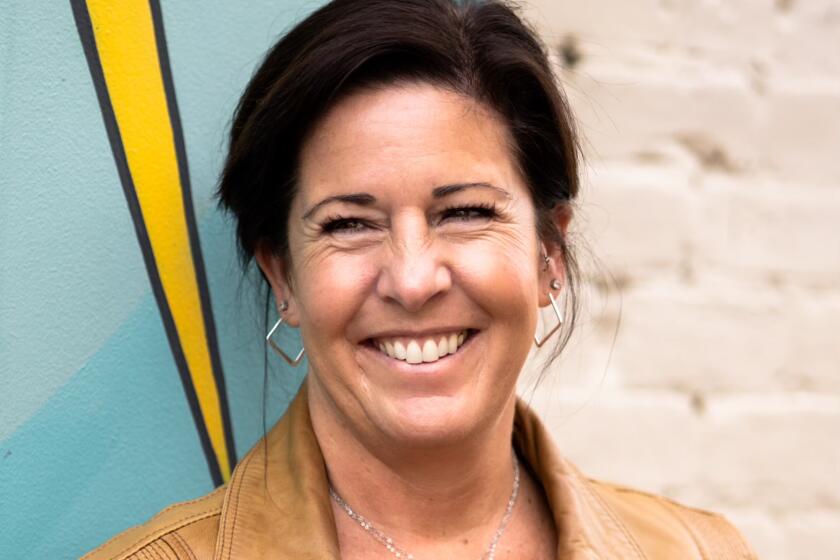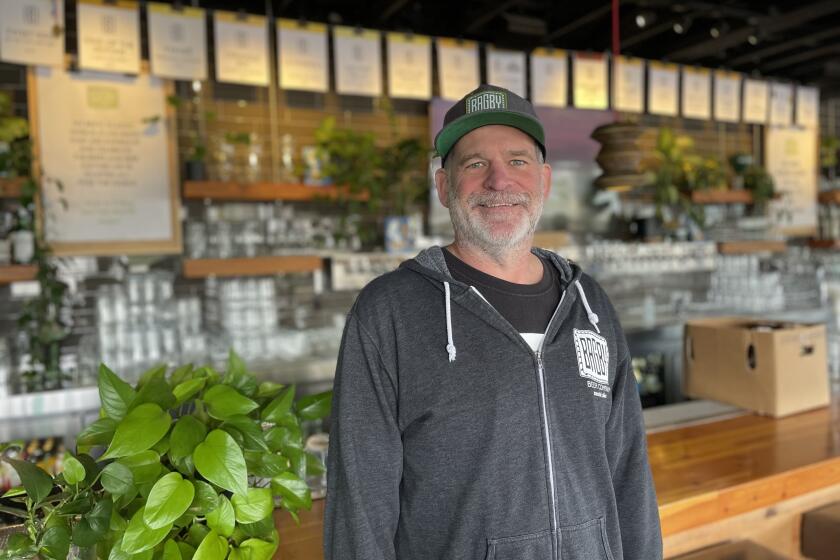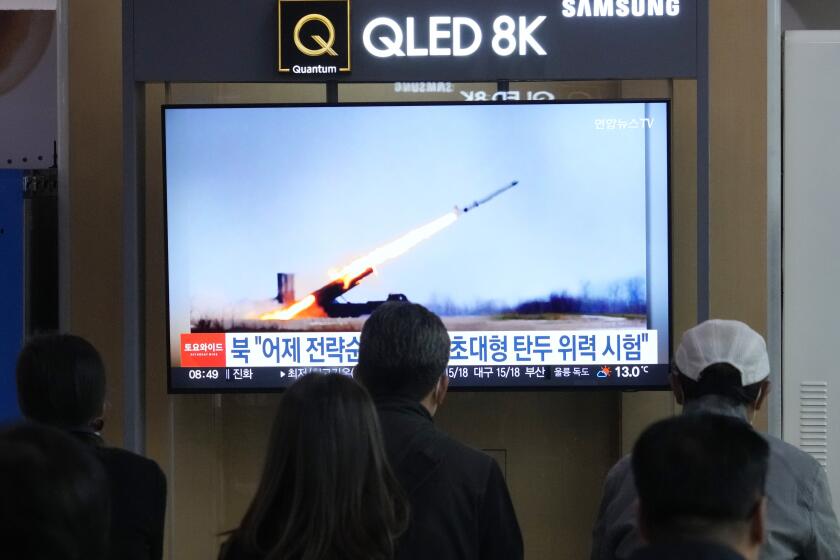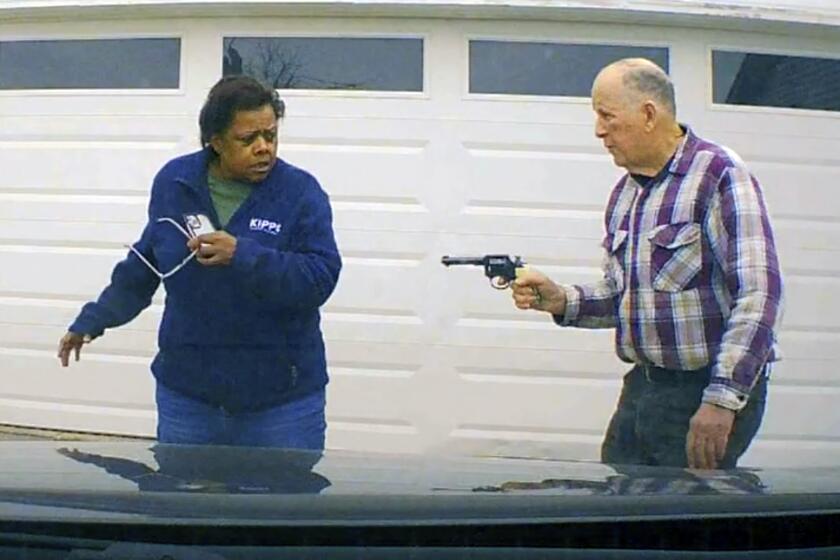PSA crash at 40: A page of San Diego history ‘written in blood’
At 9 a.m. on Monday, Sept. 25, 1978, there was still time.
Time for Kate Fons, a rookie flight attendant aboard San Diego-bound PSA flight 182, to daydream about future trips to exotic locales.
Time for Martin Kazy Jr. and David Boswell to scan the Cessna 172’s instruments while practicing landing approaches to Lindbergh Field.
Time for North Park’s Verna Huger to check her shopping list before heading to a neighborhood market.
Time for Vernon Franck, a Seabee, to begin another routine day at the naval amphibious base in Coronado.
Time for PSA 182’s captain, James McFeron, to reassure the Lindbergh control tower: “Traffic in sight.”
There was still time to avoid what would become one of San Diego’s most searing tragedies and what would be the worst airplane disaster, to that date, in U.S. history.
There wasn’t much time, though. In less than two minutes — at 9:01:47 — PSA 182 and the Cessna would collide in midair, at 2,600 feet over North Park.
The impact ripped apart the smaller plane and damaged the jet’s right wing. Both aircraft fell from the sky, slamming into residential streets, showering residences, cars and pavement with airplane parts, corpses and flames, destroying or damaging 22 homes.
There would be 144 dead: seven San Diegans on the ground, the Cessna’s two occupants and all 135 aboard the jet.
“It was awful,” said Verna Huger, 85, who opened her front door to find a neighboring house ablaze, smoke and ash choking the sky. “It was horrible.”
Tuesday will be the PSA crash’s 40th anniversary. This is ancient history to most San Diegans, as more than half of the county’s current population was born after that day. For those who were here, though, the memories remain vivid.
“I spent 30 years in the naval reserve and was deployed four times to the Persian Gulf,” said Dr. Jerry Wisniew, who worked in the temporary morgue established that day in St. Augustine High’s gym. “I saw a lot of trauma, but nothing like what I saw with that airplane crash.”
The disaster cast a long shadow. Wrongful death lawsuits tied up local courtrooms for months, as bereaved relatives sued the federal government, Pacific Southwest Airlines and Gibbs Flying Service, the local flight school that operated the ill-fated Cessna and employed Kazy.
And the crash would permanently change aviation in San Diego. A stubborn investigator fought for major revisions to the official National Transportation Safety Board report, leading to new rules governing flights operations here.
Among aviators, there’s a grim saying: “Aviation regulations are written in blood.”
That was never more true than after Sept. 25, 1978, after time ran out.
In the Air: Swiss Cheese
In the doomed jet’s flight recording, a key exchange takes place in the cockpit roughly a half minute before the collision.
“Are we clear of that Cessna?” asked First Officer Bob Fox..
“Suppose to be,” replied Flight Engineer Martin Wahne.
“I guess,” said Capt. McFeron.
“I hope,” said Spencer Nelson, an off-duty PSA pilot hitching a ride to San Diego.
In fact, they were rapidly bearing down on the plane. The initial NTSB report focused on PSA’s failure to track the Cessna. That was a grievous error, agreed Stephen K. Cusick, who was a naval aviator before becoming a flight safety expert and lead author of the textbook “Commercial Aviation Safety.”
To Cusick, though, “pilot error” is too simplistic an explanation.
“People think it is binary, either you crash or you land safely and that’s it,” Cusick said. “But it’s not like that. It’s every flight, every flight, where a pilot must use every means to mitigate safety problems, i.e., to close all the holes in the Swiss cheese.”
The Swiss Cheese theory of accident avoidance, popularized by British psychologist James Reason, argues that every person and system is fallible. Disaster is avoided by recognizing inherent weaknesses and countering them, sealing the “holes” in the “Swiss cheese.”
Catastrophic failures occur when holes in numerous slices overlap. That’s what happened over San Diego 40 years ago, said Cusick, a student of this accident.
“The Swiss cheese holes,” he said, “kept opening up.”
PSA 182 originated as an early Sacramento-to-Los Angeles flight, then continued from L.A. to San Diego. On that early fall morning, Santa Ana winds had blown away the usual marine layer. This may have been the first slice of Swiss cheese: the glare in that cloudless sky impeded visibility.
Another slice: Air traffic controllers stressed “see and avoid,” relying on pilots to visually track other planes and keep a safe distance. Whatever the men in the PSA cockpit thought they saw, it wasn’t the Cessna safely passing the jet.
Another slice: Nineteen seconds before the collision, an alarm blared in the San Diego Approach Control Facility at Miramar Naval Air Station, while an instrument panel blinked the letters “CA,” meaning “Conflict Alert.” The alarm had been automatically triggered by radar showing the flight paths of PSA 182 and the Cessna converging.
Neither aircraft was warned, though. The system had been commissioned just seven weeks earlier, and already averaged 13 conflict alerts a day — and in every case pilots had taken steps to avoid calamity, without any nudging from the control tower.
Another slice: For unknown reasons, the Cessna veered off its approved course, turning into the path of the descending PSA 182.
Another slice: Almost a minute before the collision, PSA’s message to an air traffic controller was unclear.
Was it “Think he’s passing off to our right,” or “Think he’s passed off to our right”? The former would indicate that the airliner could see the smaller plane.
“PSA said he had the aircraft in sight, then the controller relaxed and didn’t worry about it anymore,” Cusick said. “There are a lot of blind spots out there — you see something for a moment and then you lose track of it. And the Cessna couldn’t see because the PSA was coming down on top of him.”
More slices piled up: The Cessna was yellow, hard to see if you were gazing down on roofs and roadways; PSA may have mistaken another small plane for the Cessna; PSA’s crew was preparing to land, a busy time aboard an airliner.
Moreover, they were preparing to land in San Diego.
“Lindbergh Field is a dangerous airport anyway.” Cusick said. “You’ve got a very steep glide slope coming down the hill. It’s very tight.”
Four seconds after the moment of collision, the men in the cockpit can be heard realizing that a tragic mistake had been made.
“What have we got here?”
“It’s bad.”.
“Huh?”
“We’re hit, man, we are hit.”
On the Ground: Inferno at Dwight and Nile
There would be no Capt. Chesley “Sully” Sullenberger-style heroics, nothing like the “Miracle on the Hudson.” The Cessna disintegrated on contact with the jet, a Boeing 727-124, which was roughly 90 times heavier than the two-seater.
Steve Howell, covering a nearby press conference for NBC 7/39, trained his camera upwards and caught fragments of the Cessna — and what looked like a body — falling to earth. One of the Cessna’s occupants smashed through a roof over the porch of a home on the 3300 block of Polk Street; the other was still in the cockpit when it hit the pavement on Polk’s 3100 block.
Hans Wendt, then the County of San Diego’s chief photographer, was also nearby. He snapped PSA 182 tilted at a sickening 50-degree angle, its right wing in flames. (This iconic photo appeared the next day on the front page of both the San Diego Union and the San Diego Evening Tribune. The Trib’s coverage of the accident, pulled together in a few hours, received a Pulitzer Prize for local reporting.)
The PSA pilot’s chances of pulling out of that lethal dive?
“Zero,” Cusick said. “Because of the way the accident occurred, it messed up his flight control. He lost control.”
During the jet’s 17-second descent, the voices in the cockpit reflect chaos, fear, resignation.
“This is it baby.”
“Bob.”
“Brace yourself.”
“Hey, baby.”
“Ma, I love yah.”
Below the stricken airliner, North Park residents were bracing for a hot day. The temperature was already 82 degrees at 9 a.m. when Cheryl Walker delivered her 3-year-old son, Derek, to the day care center in Nancy Stout’s home.
Without warning, PSA 182 sliced the roof off a house on Nile Street and exploded onto the intersection of Dwight and Nile.
The force of the impact killed everyone aboard the jet. Three jet engines, landing gear, portions of the wing, body parts and other debris burst from the 727, then fell as a fiery rain on Dwight, Nile and Boundary streets. Some houses caught fire; others, including the one occupied by Nancy Stout’s day care center, were ripped by shrapnel.
Stout and her 4-year-old boy, Robert, were killed, as were the Walkers, mother and son.
Huger, whose house is less than a half block from the crash site, was in her backyard. “I heard the crash,” she said. “It sounded like a 2-by-4 board breaking.”
Running to her front yard, she saw her neighbor’s house to the south engulfed in flames. In fact, there were fires all around her home.
Then she heard the sirens.
About 60 percent of the San Diego Fire Department’s units raced to the scene. Police arrived in force, too, recovering bodies and nurturing the occasional ray of hope.
On Boundary Street, Officer P.L. Thornton came upon a sedan that had crashed when a body had fallen through its windshield.
“The glass just exploded and everything inside was covered with bits of glass and blood,” Thornton told a reporter. “We thought everybody was dead.”
But when the police pulled the torso aside, they found the driver — Mary Fuller of Lakeside — and her infant son. Cut by the glass, they were bleeding but alive.
Preventing more casualties was Vernon Franck’s job. With three fellow Seabees, he sped from Coronado to North Park and volunteered his services. Stationed at the end of an alley, he was ordered to prevent people from getting closer to the fires.
“I remember stopping a woman who was pleading with me that her mother’s house was burning,” he said. “We can see it roaring up, just totally exploding, ripping right behind us and you could feel the heat.”
Billowing black clouds rose over North Park, sending a grim alert across the city. Deirdre Kavanagh Bramberg, then a University of San Diego undergraduate, understood that something terrible was unfolding — but did not yet realize she had lost a friend.
The year before, she had befriended another freshman. “We were brand new and didn’t know what we would be doing,” Bramberg said. “We did all the good, fun freshman things — we went down into the canyon with the fraternity guys, had kegger parties.”
The two coeds talked of their ambitions, how they would change the world. Or perhaps see the world, as Kate Fons decided to leave college and become a PSA stewardess.
“She thought she could travel all around the world and have this fabulous life,” Bramberg said. “She was 18 or 19.”
Fons was 20 when she went down aboard PSA 182.
“It just didn’t seem real,” Bramberg said of her friend’s death. “I just thought she was going to come back on another flight.”
In the Gym: A Grisly Task
As word of the tragedy spread, many San Diegans tried to help. At the San Diego Blood Bank, more than 1,000 people formed a line around the building, only to find there were no survivors and no need for donated blood. (Even so, 652 people gave blood that day, still an all-time high.)
There was a pressing need at St. Augustine High, though, where the gym was commandeered as an emergency morgue. Dr. Jerry Wisniew, who volunteered as a team physician at the Catholic school, raced over to lend a hand.
The first body bags arrived around 10 a.m., Wisniew remembered, and the charred corpses were still hot. Trying to identify the bodies, he looked for scars, tattoos, earrings. The job was almost impossible. The most obvious clues — drivers licenses, credit cards, articles of clothing — had been destroyed.
“Most were naked,” Wisniew said. “The force of the impact had blown everything off them. And then there was the fire.”
With other doctors and nurses, Wisniew worked into the night. As the day wore on, there were fewer bodies and more grisly relics.
“This is all I could find,” said one apologetic volunteer, handing Wisniew a jaw bone.
Focusing on the work, Wisniew kept his cool until he came home around midnight. Outside, he stripped off his clothes, including his shoes. Inside, taking a shower, he was suddenly overcome by a sense memory of the smell of burned flesh.
“I started heaving,” he said, “for 15, 20 minutes.”
The next morning. he tossed the discarded clothes in the garbage.
St. Augustine’s gym floor, streaked with awful stains, was also ruined. It would be torn up and, like Wisniew’s clothes, replaced.
In Court: Setting a Price
Jury selection in the first crash-related lawsuit began Nov. 5, 1979, more than 13 months after the disaster. The husband and daughter of Rosalia Lococo, a PSA 182 passenger, sought $750,000 to $1.4 million in damages from Pacific Southwest Airlines and Gibbs Flying Service.
More than 70 similar cases would be heard over the next year, and most were wrapped up as quickly as this one. The four-day trial ended with Frank and Luisa Lococo awarded a fraction of what they had sought: $200,000.
Month after month, trial after trial, judges and juries were asked by bereaved relatives to set a price on the loss of loved ones. The sad calculus took into account the victims’ ages, professions, earnings potential, dependents and a range of unstated factors.
Pam Colarich, 23, an archeologist at dawn of her career? $150,000.
Lee H. Johnson, 36, a La Jolla developer, whose wife was pregnant with their sixth child when he died? $3 million.
Azmi David Taha, 16, a Vista High school junior? $76,000.
Gary Fox, 25, a UCLA Medical School student en route to interview for an internship? $152,076.
Nellie Jackson, 38, a divorced mother of six on what was planned as her final consulting session with the Southwest Regional Border Commission? $375,000.
Perhaps half of the trials had been concluded by January 1980, when the federal government — the air traffic controllers’ employer — and PSA agreed to not dispute their liability in this tragedy.
“It’s unheard of that the U.S. government ever admits liability an air traffic case,” said Gerald C. Sterns, an attorney who represented many of the victims’ relatives.
Perhaps so. But who was really at fault in this disaster?
On the Record: A Dissent
Less than 24 hours after the accident, investigators from the National Transportation Safety Board began scouring the scene.
The team interviewed witnesses, pored over maintenance records, listened to the tapes from PSA 182’s cockpit voice recorder, quizzed air traffic controllers, questioned everyone involved in Lindbergh Field’s flight operations.
Two months after the accident, the board convened a five-day public hearing in San Diego. Testimony was gathered from Federal Aviation Authority officials, members of the Airline Pilots Association and another group representing small airplane owners, city and county employees and others.
Dated April 20, 1979, the official report found a “probable cause of the accident”: “the failure of the flight crew of Flight 182 to comply with the provisions of maintain visual separation clearance, including the requirement to inform the controller when they no longer had the other aircraft in sight.”
The report listed other “contributing factors,” but the bulk of the blame was placed on the men who had died in PSA 182’s cockpit.
The report was adopted by a 3-to-1 vote. Among the tight circle of aviation experts, few were surprised to learn the dissenter’s identity: Francis H. McAdams.
Then in his 12th year as a board member, McAdams was a tough and occasionally contrary figure. Appointed by President Johnson, the former World War II naval pilot was a lawyer who specialized in aviation-related issues.
“In his tenure on the Federal investigative panel,” The New York Times reported in 1985, “Mr. McAdams built a reputation as its most persistent dissenter.”
His six-page dissent on PSA 182 acknowledged that the airliner’s crew was partially to blame — but so were “the inadequacies of the air traffic control system.” He blasted the “see and avoid” system, labelling it “outmoded,” and slammed the decision to ignore the alarms blaring in Miramar’s San Diego Approach Control Facility.
The NTSB board majority, McAdams noted, “for some unknown reason” ignored Cessna’s decision to abandon its flight plan and veer into the airliner’s path. PSA 182 hadn’t even been told which direction the Cessna was traveling in, “a critical omission” the majority did not mention.
Still, the majority’s findings prevailed — until August 1982, when the board was persuaded to adopt McAdams’ positions in total.
McAdams served on the board until 1983. Two years later, he suffered a fatal heart attack while jogging.
Cusick, recently reviewing the NTSB report, agreed with this dissenter. “You can’t just say that Flight 182 caused the accident. There’s plenty of blame to go around.”
Into the Future: Reforms
Forty years later, San Diego-bound travelers fly through much safer skies.
Aircraft entering the area above San Diego International are now more closely monitored by the air traffic controller, before entering the “control zone” for a landing.
“You need his permission to go in there,” Cusick said. “He takes responsibility for you, he knows that’s you, he knows where you are.”
Another critical reform is the TCAS, or Traffic Collision Alert and Avoidance System, first adopted by the FAA in 1981.
“Let’s say PSA and a Delta jet get too close to one another,” Cusick said. “The TCAS automatically tells one plane to pull up and go right, the other to drop down and go left.”
Still, Cusick could not rule out the possibility of another midair disaster. Humans are still fallible and the Swiss cheese analogy still applies.
“But there’s no doubt there’s been tremendous improvement in aviation safety,” Cusick said.
Today, most of the people living around the intersection of Dwight and Nile have no direct knowledge of the PSA 182 crash, having arrived after 1978. In 2001, one of those newcomers bought a charming bungalow on the 3600 block of Nile Street. The buyer thought the neighborhood looked familiar, but it took awhile for the memories to resurface.
“This was my first house and that’s kind of an emotional thing,” said the buyer, a surveyor. “I drove over there one evening, just trying to get the vibe of the whole thing, when I noticed the disparity in the architecture.”
That’s when it hit Vernon Franck — he had been here before, as a 19-year-old Seabee, surrounded by a horrifying scene of death and destruction.
“I was kind of spooked by the whole thing,” he said.
While Franck’s family has outgrown the little bungalow, he still owns the house, which he rents out.
“When I’m asked where this house is, I say over in North Park, where the plane went down,” he said. “And people know.”
Top headlines by email, weekday mornings
Get top headlines from the Union-Tribune in your inbox weekday mornings, including top news, local, sports, business, entertainment and opinion.
You may occasionally receive promotional content from the San Diego Union-Tribune.



